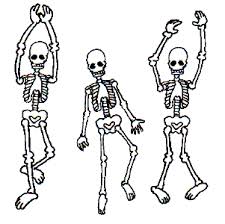 It may seem strange to talk about the benefits of water exercise for your bones. The prevailing opinion for years has been that weight bearing exercise is required to improve bone density, and since the buoyancy of the water offloads the joints, water exercise is not a good option for anyone wishing to maintain or improve their bone density. Research has been ongoing to determine if this is true or not.
It may seem strange to talk about the benefits of water exercise for your bones. The prevailing opinion for years has been that weight bearing exercise is required to improve bone density, and since the buoyancy of the water offloads the joints, water exercise is not a good option for anyone wishing to maintain or improve their bone density. Research has been ongoing to determine if this is true or not.
Tsukahara et al. did a study in 1994, which found that participants who had done water exercise for an average of 35.2 months had bone density significantly greater than beginning exercisers or sedentary controls. The study did not prove, however, that water exercise was the reason for the results.
The prescription for osteoporosis includes both weight bearing exercise and resistance training. When researchers began to look at water exercise, not as weight bearing, but as resistance exercise, they found the reasons for the improvement in bone density in Tsukahara’s study. Bone is living tissue that continually breaks down (called resorption) and builds up (called formation). One study by Moreira et al. in 2013 concluded that performing strength training exercises in water with maximal effort and without shortening the range of motion, resulted in increased bone formation in post-menopausal women. The water has resistance in all directions and the harder you push against it, the harder it pushes back. Performing strength training exercises in water with maximal effort is effective resistance training for building bone density. Limbs can be mindlessly floated through the water or they can be moved with power. Aim for power.
Moreira continued along the same lines in 2014, this time looking at high intensity interval training (HIIT). He divided 108 women into an aquatic exercise group or a sedentary control group. At the end of 24 weeks, the aquatic exercise group had less resorption (15%) than the control group (29%). Only the aquatic exercise group experienced formation (15.8%). The bone mineral density of the control group decreased 1.2% whereas there was no change in the aquatic exercise group.
HIIT requires the exerciser to work hard enough to make the heart beat faster. Since heart rate slows quickly when you stand still in water, stopping to take your pulse is an ineffective way to tell how much faster your heart is beating. But there is a correlation between how fast your heart beats and how fast you are breathing. If you are working at 80% of your maximum intensity, you will not be able to carry on a conversation. You will only be able to grunt in response to a question and you can’t keep that pace for very long. Use the same strategies for interval training that you use for strength training, a full range of motion with maximal effort. You can accelerate against the pool floor (jump), or you can accelerate against the water’s resistance in power moves. Follow the work period in your interval training with a recovery period that is long enough for you to catch your breath before you begin another work period.
Moreira’s studies duplicated the results of an earlier study done by Rotten, et al. in 2008. The findings that both strength training with maximal effort and high intensity interval training can be used to maintain bone mineral density and prevent the expected yearly decline should not be overlooked.
To learn more about the research on the benefits of immersion and water exercise, go to www.playcore.com/WaterImmersionWorks.htm To see a quick summary of the benefits of water exercise, check out the Benefits link on my website at www.waterfitnesslessons.com
See you in the pool!

Chris Alexander
